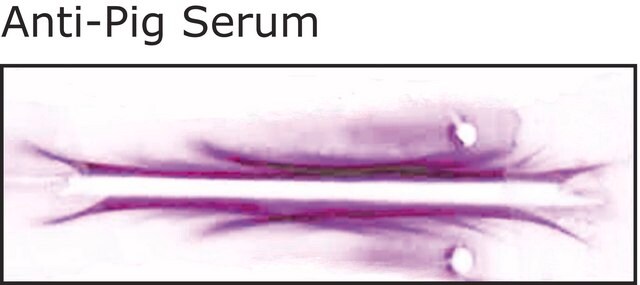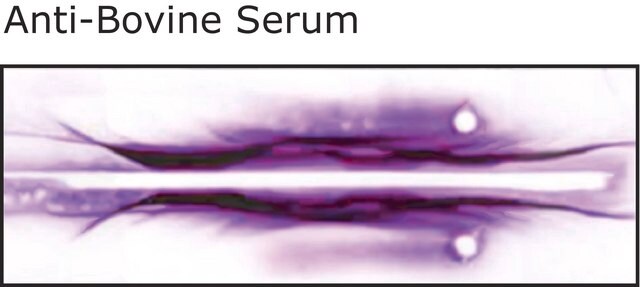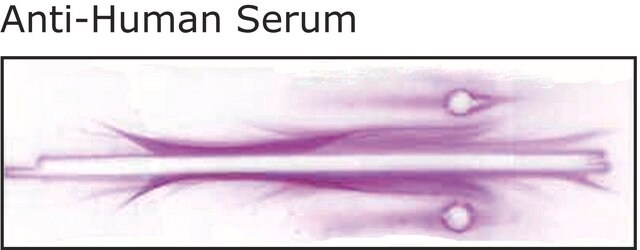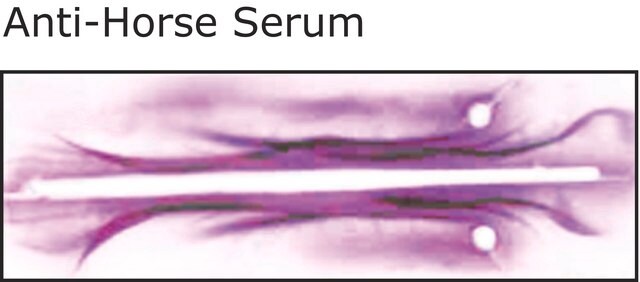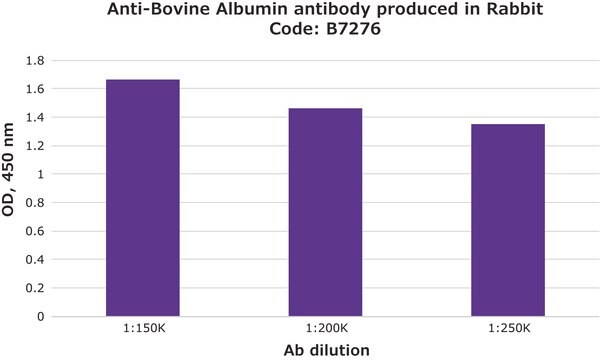B3759
Anti-Bovine Serum antibody produced in rabbit
fractionated antiserum, lyophilized powder
Synonym(s):
Anti-Serum, bovine
Sign Into View Organizational & Contract Pricing
All Photos(1)
About This Item
Recommended Products
biological source
rabbit
Quality Level
conjugate
unconjugated
antibody form
fractionated antiserum
antibody product type
primary antibodies
clone
polyclonal
form
lyophilized powder
species reactivity
bovine
packaging
vial of 2 mL lyophilized antiserum
technique(s)
immunoelectrophoresis: suitable
storage temp.
2-8°C
target post-translational modification
unmodified
Gene Information
bovine ... Alb(280717)
Looking for similar products? Visit Product Comparison Guide
Application
Anti-Bovine Serum antibody produced in rabbit has been used in differential staining.
Physical form
Lyophilized from 0.01 M phosphate buffered saline, pH 7.2
Reconstitution
Reconstitute with 2 ml deionized water.
Storage and Stability
Prior to reconstitution store the product at 2-8 °C. After reconstitution, the solution may be stored frozen in working aliquots. Repeated freezing and thawing is not recommended. If slight turbidity occurs upon prolonged storage clarify the solution by centrifugation before use.
Disclaimer
Unless otherwise stated in our catalog or other company documentation accompanying the product(s), our products are intended for research use only and are not to be used for any other purpose, which includes but is not limited to, unauthorized commercial uses, in vitro diagnostic uses, ex vivo or in vivo therapeutic uses or any type of consumption or application to humans or animals.
Not finding the right product?
Try our Product Selector Tool.
Storage Class Code
11 - Combustible Solids
WGK
WGK 2
Flash Point(F)
Not applicable
Flash Point(C)
Not applicable
Personal Protective Equipment
dust mask type N95 (US), Eyeshields, Gloves
Choose from one of the most recent versions:
Already Own This Product?
Find documentation for the products that you have recently purchased in the Document Library.
Daina Harris et al.
Biology of reproduction, 88(3), 74-74 (2013-02-08)
Cells in the mammalian blastocyst segregate into three distinct lineages, namely, trophoblast, hypoblast, and epiblast. During development, these will form extraembryonic and embryonic tissues, respectively. In mouse, only epiblast cells can be directly converted into cultured pluripotent embryonic stem cells
Zachariah McLean et al.
Biology of reproduction, 91(2), 49-49 (2014-07-11)
Mammalian blastocysts comprise three distinct lineages, namely, trophoblast, hypoblast, and epiblast, which develop into fetal placenta, extraembryonic yolk sac, and embryo proper, respectively. Pluripotent embryonic stem cells, capable of forming all adult cell types, can only be derived from the
Increased MAP kinase inhibition enhances epiblast-specific gene expression in bovine blastocysts
McLean Z, et al.
Biology of Reproduction, 91(2), 49-41 (2014)
Efficient production of GGTA1 knockout porcine embryos using a modified handmade cloning (HMC) method
Kumbha R, et al.
Research in Veterinary Science, 128, 59-68 (2020)
The role of fresh cow's milk in iron deficiency: I. Albumin turnover in infants with iron deficiency anemia
Woodruff C W and Clark J L
American Journal of Diseases of Children, 124, 18-23 (1972)
Our team of scientists has experience in all areas of research including Life Science, Material Science, Chemical Synthesis, Chromatography, Analytical and many others.
Contact Technical Service